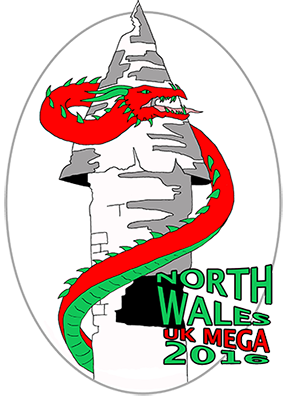General Information and Warnings
Here at Cwmorthin you will find a stunning glacial valley but geologically it can be confusing due to the vast amounts of slate mining and surface quarrying that have taken place here. The earthcaches on this trail focus on both the original glacial features of the valley, and also the interesting slate that has been exposed from underground by the workings. Always remember that the huge piles of slate you will frequently walk over and past were not placed here naturally, this is all the work of man. As you walk around, try and keep an image in your mind of how the valley would have looked before the slate was quarried.
The Rhosydd Geology Trail follows the track up the south side of the lake and back around to Plas Cwmorthin, a former quarry managers mansion. It extends a little further on a less used path that can be boggy in places, the rangers have asked that you return via the same route from the farm, please don't try and cross the boggy area between the farm and the old mines. This trail is generally further away from the mines and spoil heaps but you will pass old buildings that may be unsafe and there could be other hidden dangers - please take appropriate care. Also be aware that slate can have a very sharp edge and can cut very deeply, so please treat this area with the respect it requires.
Information about Slicing Slate
Grain/Cleavage – slate is cut from rock that was formed by the laying down of sediment in ancient seas many millions of years ago. These layers of sediment have since been compressed and heated by geothermic conditions until the layers of sediment lie closely packed against one another. Because the rock still retains these layers, it allows the quarry to split the rock into slates of a consistent thickness. A good slate will split cleaner, be of similar thickness to one another and have minimal coddling (twisting) of the slate being evident.
A second grain running down the face of a slate is also evident in most slate. The very best quality and strongest slates will have a vertical grain that runs straight from top to bottom of the face of the slate. A grain that twists, swirls, or falls horizontally part of the way down the slate indicates that the slate may not be as strong or durable.

Different ways in which a cleavage can develop in a sedimentary rock.
A: original sedimentary rock; B: pencil cleavage; C: diagenetic foliation (parallel to bedding); D: slaty cleavage.
There are various types of cleavage within quarried slate, but the type the miners wanted was ‘Slaty Cleavage’. The term used to describe this layering in slate is foliation - repetitive layering. It is caused by the parallel orientation of platy minerals in the rock such as microscopic grains of clay minerals and mica. These parallel mineral grain alignments give the rock an ability to break smoothly along the layers. The quarrymen exploited this property of slate to produce thin sheets of slate that are used in construction projects and manufacturing.
The given co-ordinates bring you to a slate fence alongside the route of the old tramway. Please examine the slate used for the fence to arrive at the answers to the questions below.
Logging Requirements (Questions to Answer)
Please e-mail me the answer to the questions via my profile. I do read all answers and try to reply to them all; I may not reply immediately so please do not wait for a reply before posting your find. Ideally, please send your answers at the same time you submit your log, or within a few days of your visit. I do check answers have been sent for every log, if you do not send answers within a week your log may be deleted. You are not expected to have any previous geological knowledge, your best attempt at the answers is all that is required.
1. Examine the slabs of slate in the fence. How did the quarrymen cut these pieces? Did they cut along the foliations in the slate? Why do you think they did / did not?
2. You saw examples of drystone walls built from slate earlier, but slate is also sometimes used for fences like this one - you can find similar examples across North Wales. How strong and durable do you think slate is when used on a fence like this (look at the stones here for evidence)? What are the good and bad points about a slate fence of this type?
3. In all quarrying the quality of the slate produced varies. Do you think this fence was built from the best slate or do you think it was built using pieces that could not have been sold? Why do you think this is the case?
We always like to see photographs of you and/or your GPS device with the geological features - plus this also provides additional proof of your visit, so please include one with your log if you wish.
This cache has been produced especially for the
